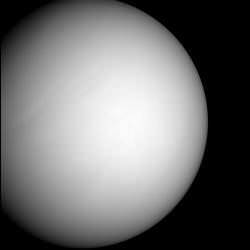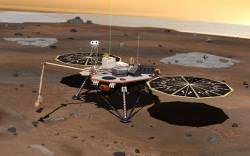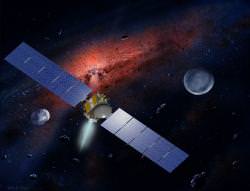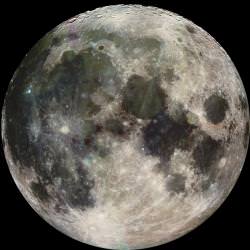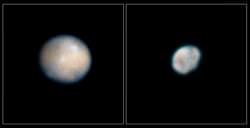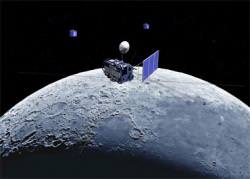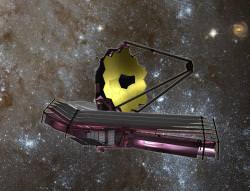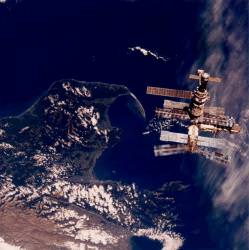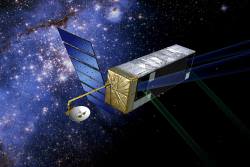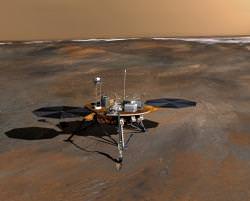NASA’s MESSENGER spacecraft made its second and final flyby with the planet Venus on June 5th, 2007. It captured images and data on the way in, and it did the same as it sped away from the cloudy inner planet. The imaging team working with Messenger have stitched together the outbound images into a video, 50 frames long.
The images were captured using MESSENGER’s Wide Angle Camera. At the beginning of the sequence, the spacecraft was only 60,688 kilometers (37,710 miles) away from Venus, and at the end, it was 89,310 kilometers (55,495 miles) away. The first set of images were taken every 20 minutes, and then every 60 minutes at the end.
Click here to watch the video. Warning, it’s a 3 MB download, so this is only for the bandwidth unimpaired.
This is the end of MESSENGER’s visits to Venus, but that just means it’s time to get ready for the big show: Mercury. In January 2008, the spacecraft will make its first flyby of Mercury, and then two more on October 6th, 2008 and September 29th, 2009. It will make its final insertion maneuver on March 18, 2011.
Once it’s in a final mapping orbit, MESSENGER will begin analyzing Mercury with a suite of scientific instruments. These are designed to answer several key questions:
Why is Mercury so dense? Of all the inner planets, it’s the most dense by far. In fact, according to calculations, it would have to be 65% metal, twice as much as the Earth. One theory proposes that the planet became enriched with metal during its formation in the early solar nebula. Another possibility is that radiation from the Sun blasted away the outer rock layer of Mercury, leaving the iron rich core.
What is its geologic history? Only 45% of Mercury has ever been photographed by spacecraft. The part that was seen is heavily cratered and ancient, like the Earth’s moon. But there are younger plains between some of the older craters, and scientists think these could indicate volcanism in the planet’s history.
What is the structure of Mercury’s core? Scientists were surprised to discover that Mercury has a global magnetic field. This is a characteristic that it shares with the Earth. We know that the Earth has a liquid metal core, that acts as a natural dynamo. Does Mercury have one too?
What is the nature of Mercury’s magnetic field? Scientists are just beginning to understand the interactions between the Earth’s magnetic field, and the Sun’s solar wind. How does Mercury’s magnetic field differ from our own?
What are the unusual materials at Mercury’s poles? Mercury’s rotation is oriented so that its axis of rotation is nearly perpendicular to its angle of orbit. This means that in the polar regions, the sunlight hits the surface at a constant grazing angle. The interiors of some craters are in permanent shadow, and could have tiny deposits of water ice.
What’s the story with its atmosphere? You might be surprised to know, but Mercury has a thin atmosphere. It’s so thin that the gas particles don’t collide with each other. Instead, they bounce across Mercury’s surface; the official name for this is an exosphere.
So many questions. I can’t wait for MESSENGER to get to Mercury.
Original Source: MESSENGER News Release

